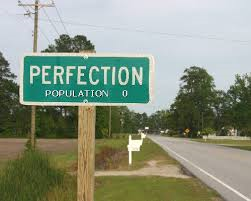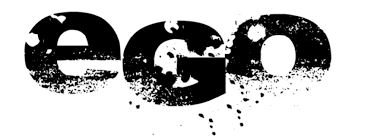Monthly Archives: August 2017
The Battle of Two Egos: A Recipe for Disaster
“Check your ego at the door. The ego can be the great success inhibitor. It can kill opportunities, and it can kill success.” — Dwayne Johnson
Our ego often turns into our greatest stumbling block. When you get two ego battling for superiority, what you end up with is a disaster. Ego prevents us from seeing things the way they really are, from seeing our true selves, and seeing the value of others.
Who is better?
Our ego likes to convince us that we are better than others; we are smarter, better looking, and more skilled. Two things to remember here: first, no one is better than anyone else; second, it does not matter if one person is stronger in one area and another in a different area. What really matters is that it takes individuals with diverse strengths and experiences working together to achieve success. When we get caught up in a battle of egos it shuts down all collaboration and cooperation, leaving us on our own to try to succeed. This is a recipe for failure.
What about building relationships?
Whether business or personal, life is all about the relationships we develop. Like it or not, relationships matter and ego is an effective relationship destroyer. When there is a battle of two egos, not only is the relationship of those two individuals impacted, but also the relationships of everyone who gets caught in the middle being pressured to take sides.
Whose interests are being served?
If you ever want to be an effective leader, you must serve the interests of your followers. When you get into a battle of egos, your interests are the only ones you are concerning yourself with. Our ego leads us to believe we must win at all costs; many times it ends up costing our followers what would have served them the best.
No One Wins
Ego is a deceiver. In the battle of two egos, no one wins. To avoid the ensuing disaster caused by the battle of two egos, keep your ego in check. Remember that no one individual is any better than another; we all have strengths and weaknesses. Never underestimate the value of relationships; no one succeeds alone. Focus your energy on the right priorities; whose interests are you serving? Get out of your own way; recognize the damage that your ego, left unchecked, can cause; and start winning.
© 2017 Elizabeth Stincelli
Liz Stincelli is passionate about recognizing and inspiring the leader in each of us. She is the Founder of Stincelli Advisors where she focuses on helping organizations change attitudes, change communication dynamics, improve collaboration and problem-solving, engage employees, and strengthen organizational culture. Liz holds a Doctor of Management degree with an emphasis on organizational leadership.
Learn more about Liz by visiting her website, stincelliadvisors.com and connect with her on Twitter @infinitestin, Google+, and LinkedIn. You can contact her by email at stincelliadvisors@gmail.com.
Leadership Growth Hacks Week 46
Where is Your Diversity?
 “We need diversity of thought in the world to face the new challenges.” — Tim Berners-Lee
“We need diversity of thought in the world to face the new challenges.” — Tim Berners-Lee
As the United States, as well as many other parts of the world, struggles for acceptance of diversity, as leaders, the success of our organizations depend on that very diversity. The very things that we see in others that cause many to fear, and some to even hate, are the very things we need to face new challenges in a new and changing world. We no longer operate in an isolated environment; now that everything we do is on a global scale; diversity plays a bigger role than ever before. We need to value diversity of thought, diversity of perspective, and diversity of background. So, where is your diversity?
At the top?
If I were to look at your management team, would I see diversity? If your management team is all cut from the same fabric, always of one mind, your results will be limited to what that one mind can comprehend. This usually results in maintaining the status quo and limiting any forward movement that is progressive or innovative.
At the table?
If I were to look in on your operation meetings, would I see diversity? If you do not encourage a diverse variety of voices to take a seat at the table, your organization will develop tunnel vision. Who is to say how many opportunities you will miss out on when your vision is limited.
In the ranks?
If I were to walk around your organization, would I see diversity out on the floor? Every one of your employees need to feel included and a sense of community. I hope your community does not all look and think the same. I also hope that the lower ranks are not the only place where diversity is evident in your organization. This limits diverse input and influence as well as cripples your organizational culture.
Front and Center
Diversity is needed at every level of the organization to really be affective. You need it at the top in members of your management team. You really need it at the table where new ideas and solutions to problems are being brainstormed. And, you need it in the ranks where everyone is respected and accepted for the personal value they add to the organization. You need your diversity front and center. If I were to enter your organization would I find evidence that you value diversity of thought, diversity of perspective, and diversity of background? Or would I see one way of looking, one way of thinking, and one way of behaving around every corner? Put your diversity front and center starting today!
© 2017 Elizabeth Stincelli
Liz Stincelli is passionate about recognizing and inspiring the leader in each of us. She is the Founder of Stincelli Advisors where she focuses on helping organizations change attitudes, change communication dynamics, improve collaboration and problem-solving, engage employees, and strengthen organizational culture. Liz holds a Doctor of Management degree with an emphasis on organizational leadership.
Learn more about Liz by visiting her website, stincelliadvisors.com and connect with her on Twitter @infinitestin, Google+, and LinkedIn. You can contact her by email at stincelliadvisors@gmail.com.
Leadership Growth Hacks Week 45
Four Tips for Sparking Innovation in Your Organization
 “For good ideas and true innovation, you need human interaction, conflict, argument, debate.” — Margaret Heffernan
“For good ideas and true innovation, you need human interaction, conflict, argument, debate.” — Margaret Heffernan
The status quo never leads to success. Success stems from questioning what we think we know, from following thoughts down alleys that frighten us, and from considering possibilities that, at first, sound outrageous. When we step outside of our comfort zone, that is where true innovation happens. So, how can you spark innovation not only within yourself, but in your organization as a whole?
Human interaction
It’s easy to get caught up in our own thoughts. It is through conversations with others that we are exposed to new ideas and ways of thinking. We spend the majority of our time in the workplace focused on accomplishing specific tasks. While completing these tasks is pertinent to achieving personal and organizational goals, it is also important that we make time to interact with colleagues. This interaction can expose us to new ideas and give novel concepts an arena to percolate. Human interaction is necessary to spark innovation in your organization.
Conflict
Conflict can be beneficial when we take the opportunity to look at the root cause. What do we agree on? What do we disagree on? This provides the opportunity for us to consider where we might be right, but also, where we might be wrong. For conflict to be beneficial, it should never be personal. It should not be about the other person, it should be about ideas and perspectives. Progress will never be made if we all think alike; it is through our differences that we discover new ideas and ways of accomplishing our goals. Conflict can serve as a catalyst for sparking innovation in your organization.
Argument
Arguing is the way we hash out differing perspectives and opinions. This, of course, must be done with absolute respect for the experiences and knowledge that others bring to the table in order to be productive. We all have something different to contribute to the conversation, this is what makes the whole more valuable than the sum of its parts. It is when several parties are able to argue their points of view, consider other possibilities, and then compromise that true innovation starts to emerge.
Debate
Debate gives us the opportunity to look at our reasoning. Are we logical, rational, and realistic? Or, are we operating from a point of bias or habit? It’s only though getting outside of our comfort zone and habitual way of thinking that we can start fostering the spark of innovation. Healthy debate challenges our way of thinking and behaving. This is where original ideas spring up and where, working together, we can nurture these new ideas and come up with something fantastic.
Always Have Their Back
As a leader, possibly the most important role you can play in sparking innovation in your organization is to always have your employees’ back. Fear of failure, criticism and the repercussions that can accompany failure deter many employees from thinking beyond the status quo, from what is to what is possible. Encourage human interaction. Support constructive conflict. Value respectful argument. And, encourage lively debate. Set the example and then give your employees your full support. Sparking innovative thinking is good for the individual, it’s good for the team, and it’s a valuable necessity for the organization.
What will you do today to spark innovation in your organization?
© 2017 Elizabeth Stincelli
Liz Stincelli is passionate about recognizing and inspiring the leader in each of us. She is the Founder of Stincelli Advisors where she focuses on helping organizations change attitudes, change communication dynamics, improve collaboration and problem-solving, engage employees, and strengthen organizational culture. Liz holds a Doctor of Management degree with an emphasis on organizational leadership.
Learn more about Liz by visiting her website, stincelliadvisors.com and connect with her on Twitter @infinitestin, Google+, and LinkedIn. You can contact her by email at stincelliadvisors@gmail.com.
Leadership Growth Hacks Week 44
No One is Perfect: Stop Expecting Perfection
 “Strive for continuous improvement instead of perfection.” — Kim Collins
“Strive for continuous improvement instead of perfection.” — Kim Collins
None of us are perfect but I cannot even begin to count the number of managers I have worked for who expected perfection from their employees. This unrealistic expectation does far more harm than good. So, what impact does expecting perfection have on employee performance?
Frustration
When our best is never good enough, we quickly become frustrated. Your employees know that you are not perfect, they know that their colleagues are not perfect, so why is it that perfection is expected from them? It is a bar set far too high to ever reach. Instead of frustrating employees with the expectation of perfection, how about encouraging them to focus on continuous improvement; baby steps can take you a long way.
Lack of motivation
When frustration becomes a daily occurrence, we begin to lose the motivation to even bother striving to improve. When faced with unattainable expectations your employees will eventually tire of feeling like they are constantly swimming upstream. Setting small, attainable goals for your employees will not only get them from where they are to where you want them to be, it will also build their confidence and fuel their motivation.
Settling
Once we have lost the motivation to strive for excellence, we begin to settle for the status quo. The status quo never leads anyone to success; it feeds the mindset of good enough is good enough. While employees need to be made to feel that their contributions are valuable, you never want them to settle for stagnating at their current level of performance. This is where your encouragement and appreciation makes all the difference; help them to continue to make progress without overwhelming them with the unrealistic expectation of perfection.
Progress not Perfection
The key to success is progress, not perfection. Many will say that excellence is the enemy of perfection. I say that getting stuck in the good enough is good enough mindset leads to maintaining the status quo and status quo is the enemy of progress. Perfection is an unrealistic expectation. To further complicate the issue, the definition of perfection varies from person to person. Stop imposing the frustration of such an expectation on your employees. Fire up their motivation rather than stifling it. Encourage the small steps of progress that deter the tendency to settle. Continuous improvement should be the goal. What are you going to do to encourage and reward progress in your employees today?
© 2017 Elizabeth Stincelli
Liz Stincelli is passionate about recognizing and inspiring the leader in each of us. She is the Founder of Stincelli Advisors where she focuses on helping organizations change attitudes, change communication dynamics, improve collaboration and problem-solving, engage employees, and strengthen organizational culture. Liz holds a Doctor of Management degree with an emphasis on organizational leadership.
Learn more about Liz by visiting her website, stincelliadvisors.com and connect with her on Twitter @infinitestin, Google+, and LinkedIn. You can contact her by email at stincelliadvisors@gmail.com.

